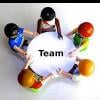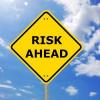Related Content
 |
How to Run a Productive and Effective Remote Team With remote work becoming the norm, now is a good time to consider how you can help your team do their best without causing burnout. Fortunately, remote work may actually improve productivity. After all, it's one of the factors that largely contribute to job satisfaction. |
|
 |
Schedule Risk Analysis Building schedules for complex projects is challenging. While the results are never perfect, credible schedules are a useful communication and coordination device. Incredible schedules are a dangerous waste of time and energy that damage a project manager’s credibility and cost an enterprise a fortune. |
|
 |
Immunizing Your Software against a Defect Pandemic When your released software is infected with problems, there is the possibility of a pandemic defect, when a wide geographic area and an exceptionally high proportion of the end-user population is affected. Just like with the coronavirus, following proper guidelines and taking mitigation steps can reduce the spread. |
|
 |
3 Ways Leaders Can Change a Blame Culture If your organization has a blame culture, team members get discouraged and mistrust leaders. It focuses on pointing fingers, not coming up with solutions to move forward. To increase trust, inspire creativity, and nurture a generative culture with your team, here are three things leaders can do instead of placing blame. |
|
 |
The Layers in the Test Automation Journey Test automation is not just a bunch of automated scripts to be written and handed off. The scripting process, though important, is just an inner layer embedded deep within the whole. There are several more layers that are important in showcasing the true value of the automated scripts. You need to understand all layers. |
|
 |
Team Agility in a Post-Pandemic World COVID-19 has necessitated entirely remote environments, and people the world over have had to inspect their foundations of working, adapt to a new way of remote execution, and integrate their personal and professional lives more than before. Organizational leaders need to embrace a new outlook in four critical areas. |
|
 |
Is It Really ‘Us vs. Them’? Teams often view executives as being "against" them and making decisions that are clueless at best or nefarious at worst. Usually, neither is the case, but there's no way of knowing true motivations if there's no discussion. Teams and directors need to repair their communication rift. This is a tale of two perspectives. |
|
 |
Testing in the Dark Requirements only go so far in identifying areas to test. Sometimes testers are given no information at all, leaving it up to them to determine what to test. Don’t accept the need to indiscriminately test with no clear understanding. Your testing should be targeted, and these techniques will help focus your test effort. |






